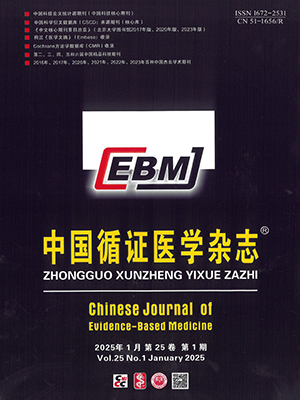| 1. |
倪明明, 许静, 王晓玲, 等. 国内17家儿童医院药品短缺现状调研分析及建议. 中国新药杂志, 2020, 29(17): 1957-1963.
|
| 2. |
Vassal G, Kozhaeva O, Griskjane S, et al. Access to essential anticancer medicines for children and adolescents in Europe. Ann Oncol, 2021, 32(4): 560-568.
|
| 3. |
Ziesenitz VC, Fox E, Zocchi M, et al. Prescription drug shortages: impact on neonatal intensive care. Neonatology, 2019, 115(2): 108-115.
|
| 4. |
Donnelly KA, Zocchi MS, Katy TA, et al. Prescription drug shortages: implications for ambulatory pediatrics. J Pediatr, 2018, 199: 65-70.
|
| 5. |
Patel R, Samiee-Zafarghandy S, Ziesenitz V, et al. US drug shortages compared to the World Health Organization's model list of essential medicines for children: a cross-sectional study. Am J Health Syst Pharm, 2022, 79(22): 2012-2017.
|
| 6. |
Shi Y, Chen Z, Zou K, et al. Global, regional and national availability of essential medicines for children, 2009-2020: a systematic review and meta-analysis. BMC Public Health, 2023, 23(1): 1185.
|
| 7. |
张伶俐, 陈哲, 曾力楠, 等. 全球短缺药品监测制度的循证评价. 中国药房, 2017, 28(34): 4753-4758.
|
| 8. |
American Hospital Association, American Society of Anesthesiologists, American Society of Clinical Oncology, et al. 2014 Drug shortages summit. 2014.
|
| 9. |
Yang C, Cai W, Li Z, et al. The current status and effects of emergency drug shortages in China: perceptions of emergency department physicians. PLoS One, 2018, 13(10): e0205238.
|
| 10. |
Association Medical Canadienne. Generic prescription drug shortages.
|
| 11. |
Metzger ML, Billett A, Link MP. The impact of drug shortages on children with cancer--the example of mechlorethamine. N Engl J Med, 2012, 367(26): 2461-2463.
|
| 12. |
李曼, 吴敏, 倪明明, 等. 儿科医联体中基层医疗机构的儿童药品短缺问题分析与改进措施. 药学与临床研究, 2022, 30(2): 187-189.
|
| 13. |
王荣乐, 赵庚昊, 崔峥. 我院近年来短缺药品调查分析. 儿科药学杂志, 2010, 16(6): 54-56.
|
| 14. |
胡小燕. 药品属性分类知识库的构建与应用. 中医药管理杂志, 2020, 28(15): 104-105.
|
| 15. |
Morrow LM, Becker F, Coleman RL, et al. Comparison of medical resources and costs among patients with coronary heart disease and impaired glucose tolerance in the Acarbose Cardiovascular Evaluation trial. J Diabetes, 2024, 16(2): e13473.
|
| 16. |
王勇. 新结构经济学中的“有为政府”. 经济资料译丛, 2016, (2): 1-4.
|
| 17. |
新华社. 中国共产党第十九届中央委员会第五次全体会议公报. 2020.
|
| 18. |
李云琦. 中国医疗体制改革难题及原因分析-从市场失灵和政府失灵角度. 财经界, 2015, (29): 168-169.
|
| 19. |
杨宏山. 公共政策学. 北京: 中国人民大学出版社, 2020.
|
| 20. |
黄新华. 从市场失灵到政府失灵-政府与市场关系的论辩与思考. 浙江工商大学学报, 2014, (5): 68-72.
|
| 21. |
刘田原, 梁晋铖. 党对政府领导: 克服“政府失灵”的中国方案. 重庆交通大学学报(社会科学版), 2021, 21(3): 11-17.
|
| 22. |
林沅锜, 许军. 关于医药卫生服务市场中政府失灵的思考. 卫生软科学, 2018, 32(8): 13-15,31.
|
| 23. |
岳平. 抓紧解决小儿药品供应问题. 中国药学杂志, 1986, (7): 442.
|
| 24. |
张伶俐, 李幼平, 胡蝶, 等. 我国儿童药物短缺的现状分析. 中国循证医学杂志, 2012, 12(10): 1159-1164.
|
| 25. |
李红梅. 廉价药为何一药难求. 现代班组, 2015, (11): 53.
|
| 26. |
魏文浩. 北京市儿童药品供应保障体系研究. 北京: 北京中医药大学, 2015.
|
| 27. |
季兴, 王倩, 许静, 等. 江苏省三级医院儿童药品短缺现状调查及建议. 中国药房, 2017, 28(33): 4617-4620.
|
| 28. |
王雪, 史敏, 潘浩成. 医院儿童药物供应不稳定原因分析及对策. 医药前沿, 2017, 7(21): 379-380.
|
| 29. |
李赛赛, 徐伟, 杜雯雯, 等. 我国儿童基本药物的可获得性研究-基于全国19省份的调查分析. 中国卫生政策研究, 2018, 11(12): 12-18.
|
| 30. |
张梦倩, 王艳翚, 钱珍光, 等. “二胎”政策下我国儿童药品供给存在问题及对策. 医学争鸣, 2020, 11(2): 76-79.
|
| 31. |
许淑红, 张绮, 张林琦, 等. 探讨我国儿科用药的发展现状及政策层面的思考. 中国临床药理学杂志, 2020, 36(12): 1760-1767.
|
| 32. |
王晓雅. 基于可及性角度的儿童用药品现状研究. 南昌: 江西中医药大学, 2020.
|
| 33. |
李勇, 温庆辉, 郭述金, 等. 我国儿童用药供给短缺现状、成因及对策分析. 中国药物评价, 2023, 40(2): 126-129.
|
| 34. |
张新宁. 有效市场和有为政府有机结合-破解“市场失灵”的中国方案. 上海经济研究, 2021, (1): 5-14.
|
| 35. |
吕红梅. “市场失灵”与“政府失灵”述评. 现代商贸工业, 2009, 21(11): 30-31.
|
| 36. |
苏晓红. 社会主义市场经济概论. 上海: 上海财经大学出版社, 2007.
|
| 37. |
国家药品监督管理局. 关于发布儿科人群药代动力学研究技术指导原则的通知. 2014.
|
| 38. |
国家药品监督管理局. 关于发布儿科人群药物临床试验技术指导原则的通告(2016年第48号). 2016.
|
| 39. |
国家药品监督管理局. 关于发布成人用药数据外推至儿科人群的技术指导原则的通告(2017年第79号). 2017.
|
| 40. |
国家药品监督管理局药品审评中心. 关于发布《真实世界研究支持儿童药物研发与审评的技术指导原则(试行)》的通告(2020年第22号). 2020.
|
| 41. |
国家药物和卫生技术综合评估中心. 关于发布心血管病、抗肿瘤、儿童药品临床综合评价技术指南的通知. 2022.
|
| 42. |
国家卫生计生委办公厅, 工业和信息化部办公厅, 食品药品监管总局办公厅. 关于印发首批鼓励研发申报儿童药品清单的通知. 2016.
|
| 43. |
国家卫生健康委办公厅, 科技部办公厅, 工业和信息化部办公厅, 等. 关于印发第四批鼓励研发申报儿童药品清单的通知. 2023.
|
| 44. |
黄业姣. 社区医院中标药品短缺原因分析及应对措施. 中国药业, 2009, 18(18): 61-62.
|
| 45. |
贾红英, 宁博, 李士雪, 等. 短缺基本药物的现状及干预措施研究. 中国卫生经济, 2012, 31(11): 48-50.
|
| 46. |
张海波, 姜宁玲, 王长青. 部分药品短缺的成因分析与应对策略. 南京医科大学学报(社会科学版), 2012, 12(2): 115-117.
|
| 47. |
郑聃. 药品带量采购政策患者满意度及其影响因素分析. 中国医药导刊, 2022, 24(6): 623-628.
|
| 48. |
陈永法, 张萍萍, 邵蓉. 国内外药品招标采购模式比较分析. 中国执业药师, 2013, 10(Z1): 37-42.
|




